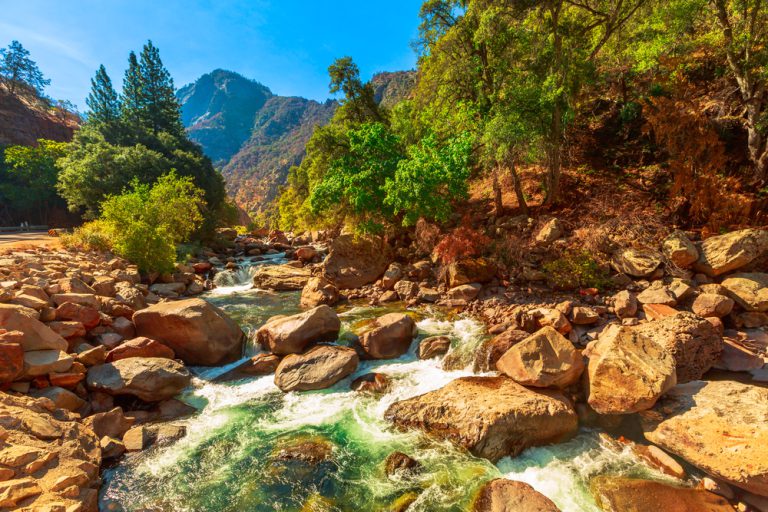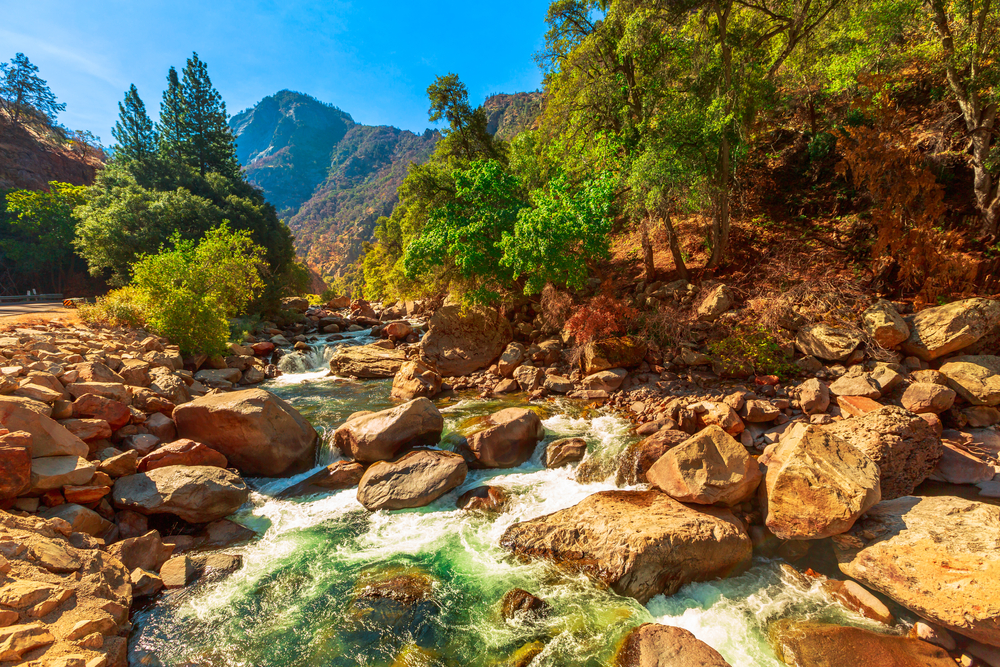
Located immediately adjacent to Sequoia National Park in one of the most scenic parts of California (which is saying something, since the whole state is pretty dreamy), Kings Canyon National Park is home to towering trees, rugged foothills, cavernous canyons and so much more. Combined, these two parks see more than one million visitors per year on average, which is unsurprising when you take into account their stunning beauty and the wide variety of activities available to outdoor lovers of all interest and fitness levels.
But there’s also a rich and complex human history here that all too often is overlooked by tourists baffled by the endless natural beauty. The lands now known as Kings Canyon National Park and Sequioa National Park are the ancestral homelands of the Mono (Monache), Yokuts, Tübatulabal, Paiute, and Western Shoshone people. These tribes stewarded and tended to the high Sierra landscape for hundreds of years before westerners ever showed up or even knew they existed, and presented an example of living with the land that more visitors and residents should attempt to enact today.
The Indigenous History of Kings Canyon National Park

Although each of these tribes had their own languages, cultures, and rich ways of life, they were bound together by certain aspects of the realities of living in this part of the country. Each tribe utilized a combination of hunting, gathering, and fishing practices to sustain themselves on the abundant fruits of the land available in this area, including big game like deer, elk, and antelope as well as smaller game animals such as birds, rabbits, turtles, fish, mussels, and even larval wasps. These people crafted spears, bows, arrows and other weapons to help them successfully sustain themselves by hunting along the land, following the seasonal migration patterns and behaviors of the local fauna.
Many of these people also created beautiful baskets used as traps and also as a way to transport and store food items, including gathered plant foods such as acorns. Manzanita berries, pine nuts, and seeds were also common supplements to the daily diet of Native Americans in the high Sierras, and the tribes also spearheaded and engaged with agricultural practices, growing their own tobacco.
Much, much more could be said about the rich histories of these various tribes, whose descendants still populate this area and keep their cultural traditions alive even in the face of marginalization. A full list of the parks’ tribal affiliations, as well as contact information for those looking for more details, can be found at the National Park Service website.
Paying Respect to the Land
Educating ourselves about the people who lived on, traveled, and stewarded these lands before us is an important way to understand our place on the landscape, contextually speaking. Any time we walk into an American wilderness (or any wilderness, or populated area, in the world, for that matter), we’re necessarily placing ourselves into an ongoing history with many, many stories, some of which have been silenced for far too long.
Reading write-ups like this one, and the information available at the NPS website, can help you more fully understand your place in that story. Additionally, Native Land is a great resource for those hoping to learn whose ancestral grounds they’re occupying, no matter where they are in the United States and in many other places across the globe.
But self-education is just the first step. In order to fully show our respect to both the land and the people who have so long loved and cared for it, we must also commit to practicing stewardship in our own way as best as we can. As visitors, rather than residents, our interactions with the land will be different from ancient Natives’, but we can still do our part to ensure we’re engaging with as little impact as possible.
Following common-sense practices, such as picking up and packing out any garbage you may bring into the park, is definitely a boon. But if you’re looking for a full list of principles to follow that will help ensure you’re leaving every wilderness you visit as nice as — or even better than — it was when you found it, we recommend checking out Leave No Trace. Their easy-to-follow principles create a heuristic guideline you can enact everywhere you go without thinking about it — and share with your fellow travel-loving and outdoorsy friends.
Enjoy your trip to this ancient, hallowed landscape that we today call Kings Canyon National Park.

